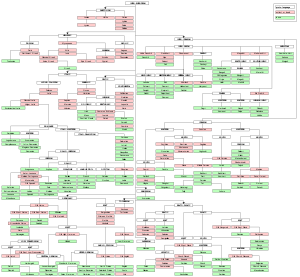Àwọn èdè Índíà-Europe: Ìyàtọ̀ láàrin àwọn àtúnyẹ̀wò
Content deleted Content added
WikitanvirBot (ọ̀rọ̀ | àfikún) k r2.7.1) (Bot Títúnṣe: gd:Cànanan Innd-Eòrpach |
WikitanvirBot (ọ̀rọ̀ | àfikún) k r2.7.1) (Bot Títúnṣe: ckb:زمانە ھیندوئەورووپایییەکان |
||
| Ìlà 52: | Ìlà 52: | ||
[[ca:Llengües indoeuropees]] |
[[ca:Llengües indoeuropees]] |
||
[[chr:Indo-European languages]] |
[[chr:Indo-European languages]] |
||
[[ckb:زمانە ھیندوئەورووپایییەکان]] |
|||
[[ckb:ھیندوئەورووپی (زمان)]] |
|||
[[co:Lingui indoauropeani]] |
[[co:Lingui indoauropeani]] |
||
[[cs:Indoevropské jazyky]] |
[[cs:Indoevropské jazyky]] |
||
Àtúnyẹ̀wò ní 09:08, 10 Oṣù Kàrún 2011
| Indo-European | |
|---|---|
| Ìpínká ìyaoríilẹ̀: | Before the 15th century, Europe, and South, Central and Southwest Asia; today worldwide. |
| Ìyàsọ́tọ̀: | One of the world's major language families |
| Àwọn ìpín-abẹ́: |
Anatolian (e.g., Hittite)
Balto-Slavic (e.g., Russian, Lithuanian)
Celtic (e.g., Irish, Welsh)
Germanic (e.g., English, German, Swedish)
Hellenic (e.g., Greek)
Indo-Iranian (e.g., Bengali, Hindi, Persian, Kurdish)
Italic (e.g., French, Italian, Portuguese, Spanish)
|
| ISO 639-2 and 639-5: | ine |
[[File: | |

Awon ede ti Indo-Europe je ebi (tabi phylum) awon of ede bi ogorun to baramu,[1] to kopo awon ede Europe, ti Iranian plateau, ati awon ede Apaguusu Asia, ati bakanna ni Anatolia ati Aarin Asia.

|
Àyọkà yìí tàbí apá rẹ̀ únfẹ́ àtúnṣe sí. Ẹ le fẹ̀ jù báyìí lọ tàbí kí ẹ ṣàtúnṣe rẹ̀ lọ́nà tí yíò mu kúnrẹ́rẹ́. Ẹ ran Wikipedia lọ́wọ́ láti fẹ̀ẹ́ jù báyìí lọ. |
Itokasi
- ↑ It is composed of 449 languages and dialects, according to the 2005 Ethnologue estimate, about half (219) belonging to the Indo-Aryan sub-branch.
